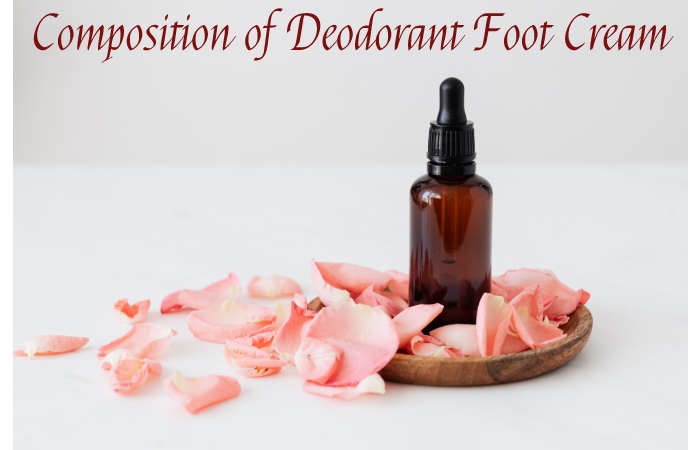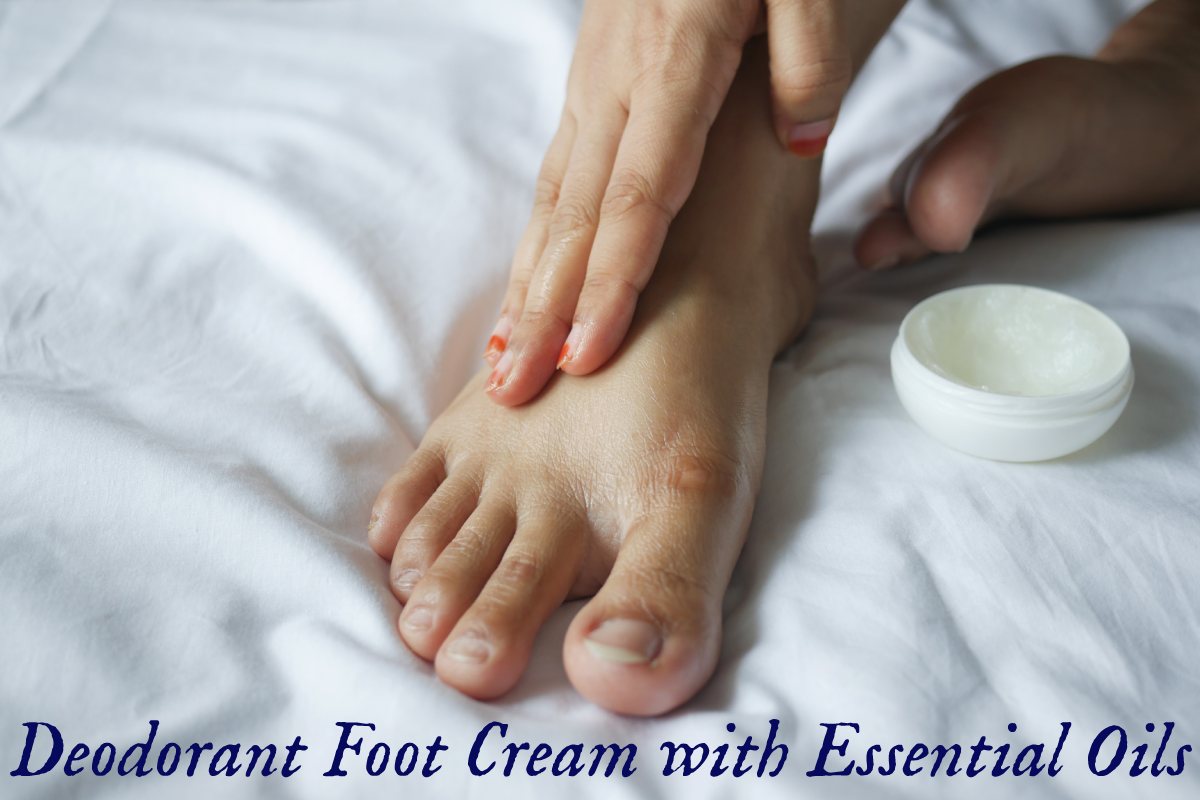Deodorant Foot Cream: Essential oils play a significant role as antiseptics in deodorant creams, eliminating foul odors. This article describes making a foot deodorant cream based on these essential oils. It is a cosmetic invention that can be considered entirely natural from the point of view of the active ingredients it contains. Certain dermatological and galenic aspects are also discussed.
It can be considered a phytotherapeutic cosmetic product. It falls within the concept of natural cosmetics. Its action is based exclusively on the essence it contains.
Table of Contents
What is the Composition of Deodorant Foot Cream?

We are dealing with an o/w mixture that has the following composition:
- Glyceryl monostearate, 20%
- Tween 80, 10%
- Propylene glycol, 10%
- Lavender essence, 0.3%
- Lemon essence, 0.3%
- Thyme essence, 0.3%
- Rosemary essence, 0.3%
- Cinnamon essence, 0.1%
- Alpha-tocopherol acetate (vitamin E), 0.5%
- Purified water CSP, 100 g
What Dermatological Action Do the Essential Oils have in this Formulation?
They have antiseptic action, eliminating the bacteria that cause foul body odor. Also, due to their perfuming power, they mask lousy body odor. It is, therefore, a cream of the so-called deodorants to eliminate foul body odor. The cream only has a deodorant action and not an antiperspirant.
Galenic Aspects of the Excipient?
The aqueous external phase emulsion (o/w) forms by emulsifying a waxy-type fatty agent such as glyceryl monostearate in the water thanks to Tween 80 (Polysorbate 80), a non-ionic surfactant. Therefore, the emulsion formed is non-ionic. It has a high evanescence (barely leaves a greasy residue after application), a fundamental aspect given the application area. Accepts without stability problems the number of essential oils added.
Propylene glycol increases the extensibility of the emulsion favoring its application.
Vitamin E is a natural antioxidant that prevents the oxidation of essential oils over time.
What are the Phases of the Emulsion?
The aqueous phase is made up of purified water, Tween 80, and also propylene glycol
The oily phase comprises glyceryl monostearate, essential oils, and also vitamin E. The latter two incorporate at room temperature because they are thermolabile.
Is it Necessary to Add Preservatives?
It is unnecessary since the cream is self-preserving, thanks to its essential oils.
How is the Formula Made?
The manufacturing steps are as follows:
- Place the glyceryl monostearate in a beaker ( oil phase ). In another cup, place the purified water and dissolve the Tween 80 and the propylene glycol ( aqueous phase ). Heat both degrees separately in a water bath at 70-75º C.
- Once the oily phase has melted, remove both from the water bath and add the aqueous phase in small portions over the oily phase, stirring until cooling. The emulsion obtain.
- Add the essential oils and vitamin E in small portions, stirring until homogeneous. Pack in polyethylene tube or aluminum tube with internal enamel.
What are the Physical and Organoleptic Characteristics of the Cream Obtained?
A cream of homogeneous whitish medium consistency obtains, with high evanescence and also optimal extensibility.
Form of Application and Dosage
After cleaning the feet and once they are dry, apply the cream in a thin layer on the soles and between the toes, massaging until completely diffused. A daily application is enough, although it can also apply every 12 hours.
Adverse Reactions
It may cause transitory itching or sting after application on sensitive or reactive skin—caution in people allergic or reactive to essential oils.
Conservation
Store at room temperature, not here from light and also moisture. The formula for cosmetic use.

